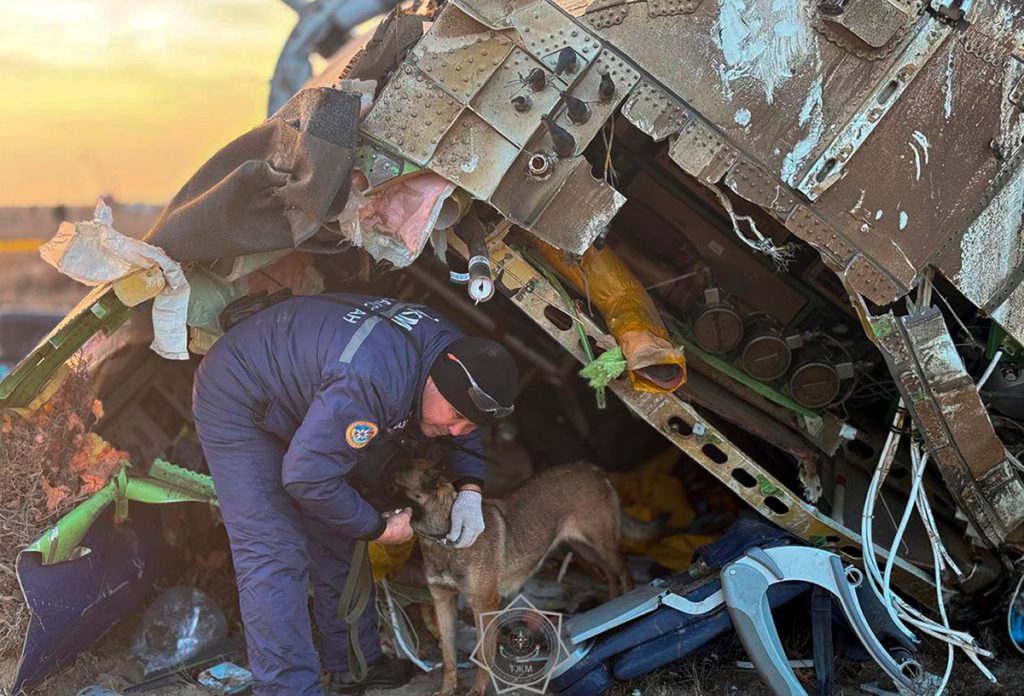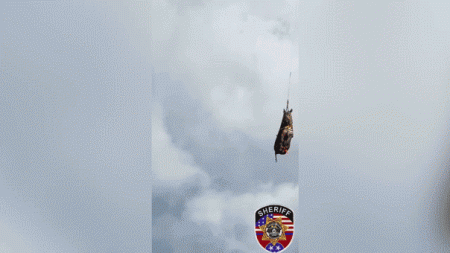The fatal crash of Azerbaijan Airlines flight J2-8243 near Aktau, Kazakhstan, on Christmas Day has sparked international concern and a diplomatic row between Russia, Azerbaijan, and Kazakhstan. The aircraft, en route from Baku to Grozny, crashed just half an hour into its flight, killing 38 people and leaving 29 survivors. While the exact cause of the crash remains under investigation, emerging evidence strongly suggests the involvement of Russian air-defense systems operating in the vicinity of Grozny, the Chechen capital. This possibility has placed Russia in a precarious diplomatic situation, particularly given the already complex geopolitical landscape and its strained relations with neighboring countries.
The incident unfolded against the backdrop of reported Ukrainian drone attacks on Grozny and two towns in North Ossetia–Alania. Russian President Vladimir Putin, in a phone call with Azerbaijani President Ilham Aliyev, offered an apology for the incident occurring within Russian airspace, claiming that Russian air defenses were engaged in repelling the Ukrainian drone attacks at the time of the crash. However, Putin stopped short of explicitly accepting responsibility for downing the Azerbaijani airliner. This carefully worded apology has drawn criticism, particularly from the United Kingdom, which accused Russia of reckless and irresponsible actions that pose a direct threat to the national security of other states.
Flight-tracking data reveals that the ill-fated aircraft experienced significant GPS interference shortly after takeoff, followed by intermittent and likely inaccurate location data transmission. The crash site, hundreds of miles off course and across the Caspian Sea from its intended destination, further deepens the mystery surrounding the incident. Video footage of the crash shows the plane hurtling towards the ground with its landing gear deployed, before bursting into flames upon impact. Experts, officials, and open-source intelligence analysts have pointed to shrapnel damage visible in the wreckage as potential evidence of a missile strike. This observation aligns with reports from US military officials, who suggest that Russia may have misidentified the passenger plane as a Ukrainian drone.
The international community has responded with calls for a thorough and transparent investigation. Ukrainian President Volodymyr Zelensky, while expressing condolences, stressed the need for clarity and accountability, urging Russia to provide unambiguous explanations and cease disseminating disinformation. He emphasized the visible damage to the aircraft’s fuselage, including punctures and dents, as compelling indicators of a missile strike. The U.S., through National Security Communications Adviser John Kirby, has also expressed concerns and offered assistance to both Kazakh and Azerbaijani authorities in their investigations.
Both Azerbaijan and Russia have announced investigations into the incident. Azerbaijan has specifically requested the involvement of international experts to ensure a comprehensive and impartial inquiry. A team of Azerbaijani officials has already arrived in Grozny to participate in the investigation led by Russian authorities. Both countries have pledged to conduct the investigation with full transparency and provide regular updates to the public. This commitment is crucial to address international concerns and maintain trust amidst the sensitive geopolitical context.
This incident highlights the potential dangers of operating air defense systems in contested airspace, particularly during periods of heightened military activity. The possibility of misidentification, coupled with the inherent risks associated with deploying such systems, underscores the need for stringent protocols and clear communication to prevent tragic accidents like this. The ongoing investigation, and the subsequent findings, will be critical not only for determining accountability but also for informing future practices and preventing similar incidents from occurring. The international community will closely scrutinize the investigation process and its outcomes, seeking assurance that those responsible are held accountable and that measures are implemented to mitigate such risks in the future. The incident serves as a stark reminder of the fragility of air safety and the devastating consequences of miscalculation in times of conflict.










